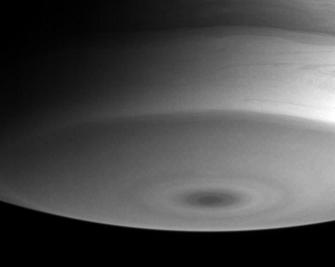Fog discovered on Saturn's largest moon Titan
 Los Angeles, Dec 20 : US scientists have discovered fog moving across the south pole of Saturn's largest moon, Titan.
Los Angeles, Dec 20 : US scientists have discovered fog moving across the south pole of Saturn's largest moon, Titan.
Titan looks to be the only place in the solar system aside from Earth to have copious quantities of liquid (largely, liquid methane and ethane) on its surface.
The new discovery suggests that Earth and Titan share yet another feature, which is inextricably linked with that surface liquid: common fog, according to researchers at the California Institute of Technology (Caltech).
The presence of fog provides the first direct evidence for the exchange of material between the surface and the atmosphere, and thus of an active hydrological cycle, which previously had only been known to exist on Earth, the researchers said in a paper published in the latest issue of Astrophysical Journal Letters.
Titan's south pole is spotted "more or less everywhere" with puddles of methane that give rise to sporadic layers of fog, said planetary astronomer Mike Brown of Caltech, Xinhua reported Saturday.
The researchers made their discovery using data from the Visual and Infrared Mapping Spectrometer (VIMS) onboard the Cassini spacecraft, which has been observing Saturn's system for the past five years.
The VIMS instrument provides "hyperspectral" imaging, covering a large swath of the visible and infrared spectrum.
Brown and his colleagues searched public online archives to find all Cassini data collected over the moon's south pole from October 2006 through March 2007. They filtered the data to separate out features occurring at different depths in the atmosphere, ranging from 20 km to 0.25 km above the surface.
Using other filters, they homed in on "bright" features caused by the scattering of light off small particles -- such as the methane droplets present in clouds.
In this way, they isolated clouds located about 750 meters (less than a half-mile) above the ground. These clouds did not extend into the higher altitudes but into the moon's troposphere, where regular clouds form. In other words, said Brown, they had found fog.
Brown noted that evaporating methane on Titan "means it must have rained, and rain means streams and pools and erosion and geology. The presence of fog on Titan proves, for the first time, that the moon has a currently active methane hydrological cycle".
The presence of fog also proves that the moon must be dotted with methane pools, Brown said. That's because any ground-level air, after becoming 100 percent humid and turning into fog, would instantly rise up into the atmosphere like a giant cumulus cloud.
"The only way to make the fog stick around on the ground is to both add humidity and cool the air just a little," he explained.(IANS)